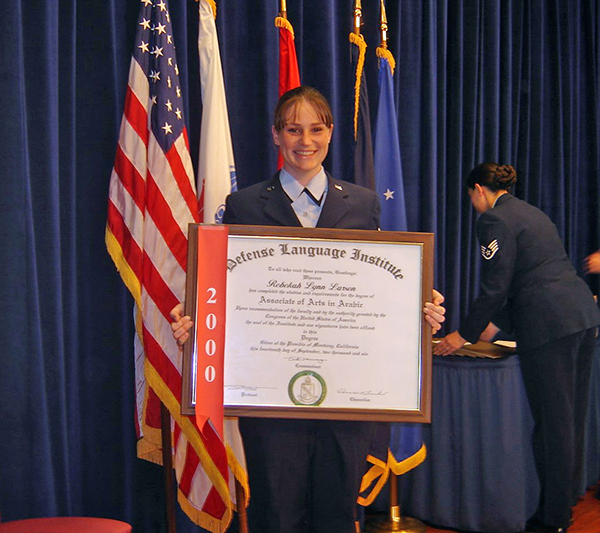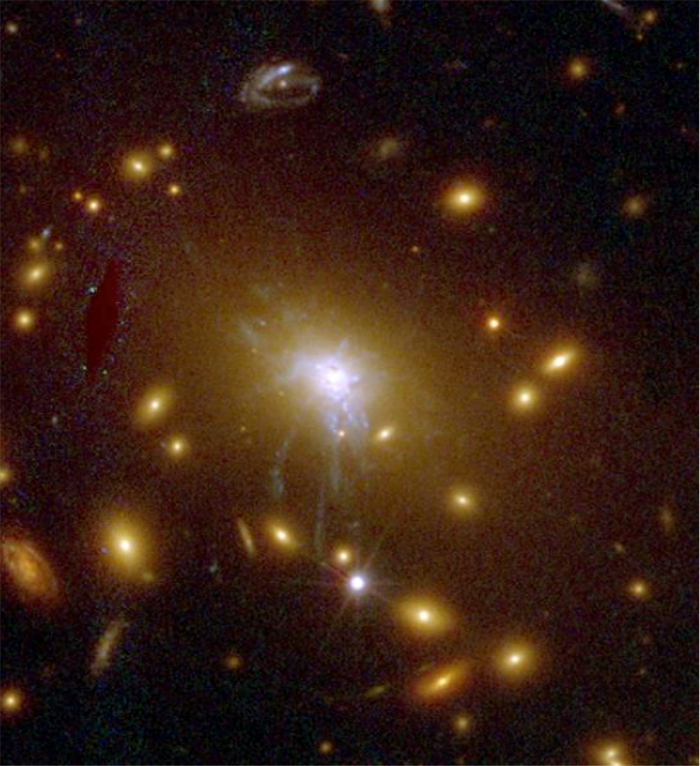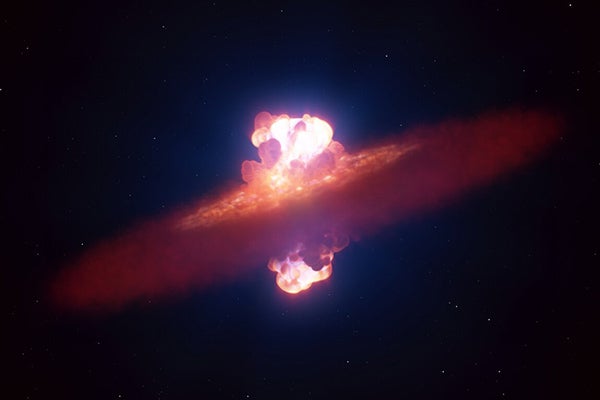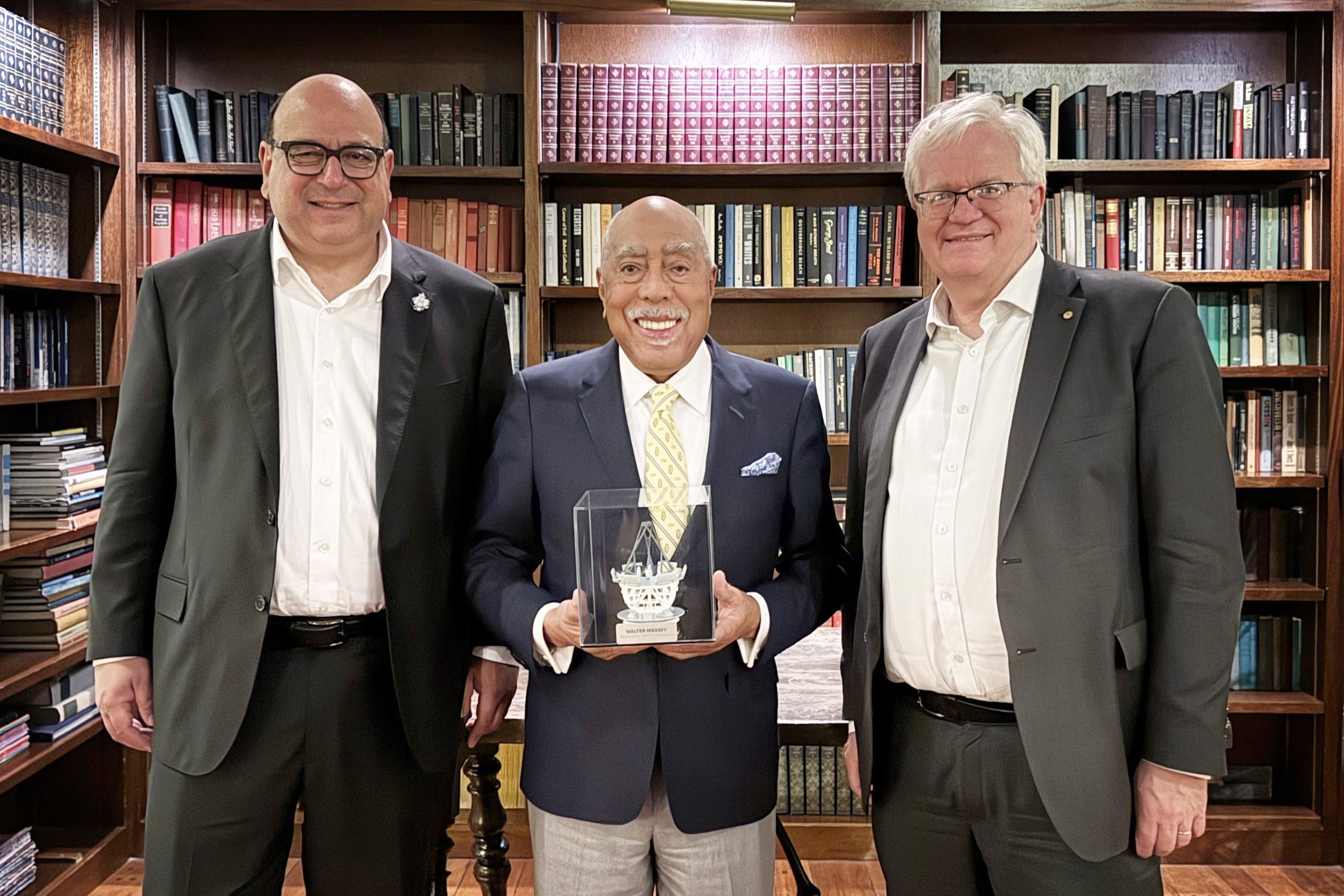The Unexpected Journey of a Veteran Student and Astronomer
The educational journey of one exceptional student has taken her from translating Arabic in the Air Force to learning the secrets of the stars.

The educational journey of one exceptional student has taken her from translating Arabic in the Air Force to learning the secrets of the stars.
Rebecca Larson, a 2016 Dean’s Honored Graduate receiving bachelor’s degrees in both astronomy and physics, also is pursuing her Ph.D. here in astronomy.
Larson graduated as the first author on a paper published in one of the highest-impact journals in astrophysics. A veteran, she has spent her time at The University of Texas at Austin as an advocate for improvements in the transfer process for military students and helping to create an inclusive community for those who have served. She is also a founding member of the first women’s astronomy group at UT Austin.
The Journey to UT
Larson’s journey to study astronomy in the hallowed halls of UT Austin was long, circuitous and unexpected, with many obstacles along the way. In fact, the biggest surprise was that she never intended to study the stars in the first place. Fate engineered a strange confluence of bureaucracy and happenstance to steer her into a career that she now cannot envision leaving.
“I had great grades but I didn’t have a passion for anything,” Larson recalled, thinking back to when she graduated high school. “I thought the military would give me a good place to start. I would learn something, I would get the GI Bill for my education, and it would give me some kind of skill that would be useful for my future.”
A military aptitude test revealed a skill for languages, so she entered the Air Force’s intensive Defense Language Institute, graduating with an Associate’s Degree in Arabic. Stationed in Maryland and then Georgia, she supplied translation support for Operation Iraqi Freedom and led a team of ten linguists for the National Security Agency’s stateside office for Sub-Saharan Africa.

Larson receiving her associate’s degree in Arabic from the Defense Language Institute in 2006.
During her stint in the Air Force, whenever she wasn’t working, Larson furthered her college education by taking night classes. “If there’s one thing I knew I wanted to do, it was go to school, and that’s exactly what I did. And I did it as much and as often as I could.”
In 2010, she chose not to reenlist after six years and moved to San Jose, California, to be near her family and enroll in San Jose State University. When her family later moved to Austin, she decided to follow, with the goal of entering the McCombs School of Business at UT Austin.
A Rocky Start
When Larson applied to UT, she brought an impressive transcript with more than 145 credit hours from eight separate institutions. Unfortunately, her transcript turned out to be an impediment.
The School of Business wouldn’t allow her to transfer directly in with that many credit hours, and, although she was accepted to enter UT’s School of Undergraduate Studies in the spring of 2013, the week before classes were to begin she learned she also had too many credit hours to remain in that school. She was technically a senior and needed to pick a major. Making matters worse, Larson’s GI Bill was running out. She had to stick with whatever she chose in order to graduate on time or face losing her funding.
“On orientation day, I suddenly had to decide what was I going to do with my life,” Larson said. “I didn’t know what to do.”
As Larson scanned the science majors, one caught her eye. She had a love of science fiction and an appreciation for the beauty of space. So, on a whim, she chose astronomy. On that fateful orientation day she met an astronomy counselor.
“I walked in, and I think she could see the look on my face. She sat me down and started calling people for me,” said Larson. “Had she not done that and taken the time to sit down and tell me about the Astronomy Department and the resources I’d have there, I don’t think I would have been very successful that day or that semester.”
She would continue to be amazed at the kindness and camaraderie she found within the Astronomy Department. “I felt like I really had a place here and that I was part of a community.”
It was a tough first semester, but a required undergraduate studies course captured her imagination. She took Dr. Neal Evans’ course on extraterrestrial life, and that, in turn, led her to research.
The Research

The data plot that changed Larson’s life.
Larson approached Evans to talk about summer research options, explaining that she wanted to get a taste of what it was like to be an astronomer and see if she was on the right path. Evans saw her potential, telling Larson that if she could learn Arabic, she could handle astronomy. That summer, she got a crash course in quantum mechanics from a pair of scientists, enough to get her started in sifting through data.
The goal of the research project was to figure out why protostars—stars that are in the process of forming—take longer than expected to develop. One idea was that turbulence from a shockwave could disrupt the process, slowing down or even stopping star formation. Models predict that this turbulence should cause certain molecules to get excited and jump up to a higher state of energy.
Larson spent the next year poring through data from the Herschel Space Observatory, looking for the telltale energy spikes. Eventually, she plotted measurements taken from the data and compared it to what the theoretical model predicted. She found a perfect match.
“The moment I plotted that, it changed my life. I fell in love,” said Larson. “No other human being had been able to prove this…had found observational evidence that this exists, and we just did. I knew then that I didn’t want to do anything else with my life.”
Evans was as shocked as she was upon seeing the findings, but after the data and measurements were verified, the results were found to be correct. He offered Larson the opportunity to write up the paper, with her as first author, and she jumped at the chance. The researchers submitted their paper to The Astrophysical Journal, one of the top publications in the field, where it was published in June 2015.
The next summer, Larson applied for and received a grant through the College’s Texas Institute for Discovery Education in Science (TIDES) to do summer research, characterizing extreme star-forming galaxies in the early Universe, with Dr. Shardha Jogee. The project used a survey of a large swath of the sky that contains more than a million galaxies. Larson, the only undergraduate with a leading role in this international science collaboration, identified several dozen candidate distant extreme galaxies. These galaxies appeared to be producing stars at a rate over a hundred times that of our own Milky Way Galaxy.

The center of a galaxy cluster that Larson studied at the Space Telescope Science Institute.
In her third and final summer, Larson accepted an offer from the Space Astronomy Summer Program to travel to Baltimore, Maryland, where she researched massive galaxies at the center of galaxy clusters with Dr. Marc Postman at the Space Telescope Science Institute.
Larson’s work has earned her numerous awards, including the Astronomy Department’s Karl G. Henize Award and Ralph Cutler Greene Award.
Giving Back
Through it all, Larson remembered where she came from. She devoted time to improving the lives of Longhorn veterans, working diligently with Student Veteran Services in the Office of the Dean of Students and founding a UT Women Veterans group. She helped encourage the Student Veterans Association to create new mentor programs that pair incoming veterans with a current undergraduate veteran in their field and to organize happy hours, lunches and coffee breaks that present chances to socialize with other veterans. She is currently partnering with a fellow veteran in engineering to create a similar mentor program for incoming graduate student veterans. For her efforts, Larson was awarded the Student Veteran Academic Leadership Award in 2015 and the Outstanding Community Service Award in 2016.
“I think that a big challenge, especially for veterans, is that there’s a sense of community in the military that you definitely lose when you leave, and that adjustment is very difficult,” she said. “The military is a wholly different world, and to have that community of veterans is very nice and it’s something that we’ve definitely worked for with our organization.”
Larson also helped create a special transfer orientation for veterans to ensure that what happened to her during her orientation doesn’t happen to others.
“We reach out to them before they get here, so that they know where to go on orientation day and to help them with all of the GI Bill paperwork and everything.”
In addition to her work with veterans, Larson is part of the group that founded the first women’s organization in astronomy at UT, the Association of Women in Astronomy Research and Education (AWARE).
The Future
As a UT graduate student in astronomy, courtesy of the Astronomy Graduate Excellence Fellowship (a full scholarship), Larson joins the lab of Dr. Steve Finkelstein to study galaxies from the very early universe and learn how galaxies evolve over time.
“I didn’t intend on doing this with my life, but I can’t imagine not doing it,” she said. “It’s the most incredible thing I’ve been able to do.”
Update: In 2019, Larson was named one of 10 finalists across the country for national Student Veteran of the Year by Student Veterans of America.



